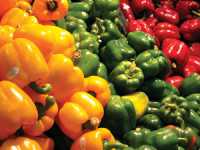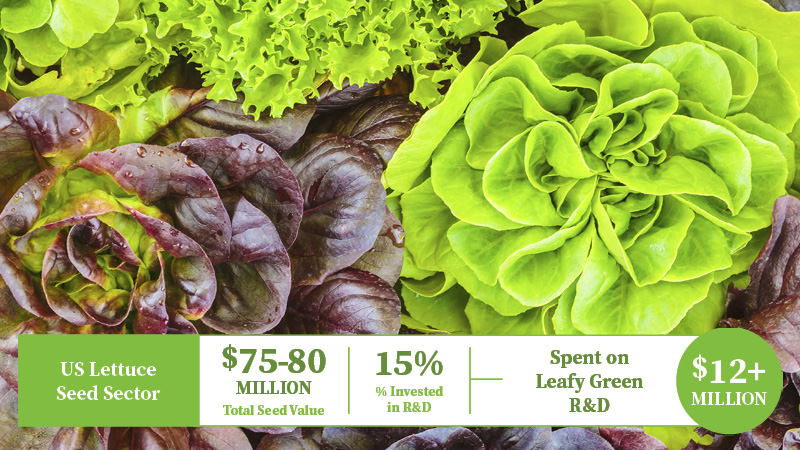Food Safety: What You Need To Know

The newly passed Food Safety Modernization Act (FSMA) certainly makes for some heavy reading. This historic piece of legislation is 89 pages long (not including the somewhat controversial small farm exemption known as the Tester-Hagan amendment) and covers everything from FDA’s new responsibilities of preventing and responding to food safety problems, to improving the safety of imported food, and a whole lot in between.
Since President Obama signed the bill on Jan. 4, industry insiders and analysts representing a wide range of states and crops have been digging deep into the language within the bill, and pulling out elements and provisions that are significant to their respective audiences. The editors of American/Western Fruit Grower, American Vegetable Grower, and Florida Grower magazines have been doing the same thing. Along with the help of some key industry leaders, we present 10 items included in this bill that you need to know about, along with what you can expect moving forward. A special thanks to Debbie Hamrick, specialty crops director with the North Carolina Farm Bureau, and Robert Guenther of United Fresh Produce Association, for their assistance in putting this list together.
This is by no means a complete list, and there may be additional aspects of this act that are also important to you. This is why it’s probably a good idea to get a copy of the bill and read it for yourself (to find a copy, click here).
1. FSMA gives FDA the authority to order a recall of food and to detain food based on a “reason to believe” the food is adulterated or misbranded.
2. FSMA represents a paradigm shift from detection of a problem to prevention. It requires everyone from growers to processors to identify and implement preventive controls to significantly minimize or prevent hazards that could affect food that is grown or packed. In the past, FDA had been charged with investigating instances of foodborne illnesses after a potential problem was discovered. With this new focus, FDA will now have a Congressional mandate to inspect food facilities more frequently and to develop produce safety standards.
3. Get used to FDA getting involved in how food is grown and harvested. Working with USDA, state departments of agriculture, and the Department of Homeland Security, FDA will be developing science-based minimum standards for the safe production and harvesting of fruits and vegetables. The new rules that are developed must be flexible to the scale and diversity of farms; they must consider naturally occurring hazards; they must consider conservation and environmental standards; they must not conflict with organic standards; they must not require third-party consultants (although this does not exclude buyers from requiring their own standards; see #7); and they cannot proliferate standards.
Growers who are interested to see the direction FDA is likely to take can refer to existing guidance documents that FDA has developed for minimizing microbial contamination of produce. To find these documents, go to www.fda.gov, and type “Produce and Plant Products Guidance” into the search box.
4. These “science-based” standards are surely a welcome relief to an industry that has been calling for such an approach to food safety and food production for many years. The legislation instructs rule makers to look at known risks. Most likely, the crops that will be targeted first are crops like leafy greens, tomatoes, sprouts, cantaloupe, and raspberries, those crops that have been involved in the highest number of food safety incidents. The legislation does provide FDA the opportunity to exclude low-risk produce crops.
5. Tracking and traceability will be a big focus in the future, especially for growers catering to wholesale regional, national, or international markets. Within nine months of enactment, FDA will be required to explore methods for improving food tracking, and will then be required to establish within the agency a suitable tracking system. This system must take into account costs and benefits based on technology, the feasibility of such technology, and the compatibility of the technology. Prior to developing rules, FDA must conduct traceability studies; at least one of those studies must involve produce.
6. In developing traceability systems, FDA cannot prescribe the use of specific technologies, cannot require you to change business systems, and cannot require you to create duplicate records. Legislation is very specific in that regarding traceability records, growers are not required to keep any new records. Information that FDA can request in the event of a food safety investigation includes records kept in the normal course of doing business.
FDA cannot ask for information on finances, pricing, personnel, research, sales, or other confidential information. However, realistically you may want to think about investing in traceability technology, or at least keeping up with it. “This is something growers certainly need to be aware of,” says Hamrick. “As we move forward, information will take on equal or perhaps more value than the product itself.”
7. It’s true that there is an exemption for farms with less than $500,000 in annual food sales. However, this exemption does not preclude individual buyers from developing their own produce safety standards. Farmers selling into the Farm to School program will still be mandated to be GAPs audited. And the legislation specifically does not preempt any state or local government from establishing food safety law or from enforcing any law they currently may have.
“The exemption does not prevent your customer from demanding that you follow produce safety, which could include going through an audit,” says Hamrick. This also means that states can enforce even stricter standards if they deem it necessary. As many of you are all too aware, some national retail buyers already have their own safety standards and audits in place. Even those that do not are likely talking about it, says Hamrick.
One other thing to remember when it comes to this exemption is that it can be withdrawn if a foodborne illness outbreak can be directly linked to an exempted farm. This is why farms all of sizes, regardless of the exemption, must practice due diligence.
8. The tomato industry lost an estimated $100 million in 2008 thanks to the Salmonella outbreak that was falsely linked to tomatoes. Even when the problem was eventually attributed to peppers from Mexico, both tomato and pepper growers lost money after harvests were halted, shipments were cancelled, and the product was pulled from menus and supermarket shelves.
Because of industry pressure on U.S. Senators who listened, the Food Safety Modernization Act instructs the General Accounting Office to evaluate and report on possible compensation for growers hurt financially by an erroneous recall. In addition, USDA is charged with studying, and coming up with recommendations, on how to implement grower restitution for losses sustained from mandatory recalls that are later determined to be in error.
There is one caveat to this, however. Once these recommendations were made, no specific program was set up to provide funding. Because of this, it will be up to the industry to push it through Congress, whether it’s included in the next Farm Bill or it becomes its own bill.
9. When it comes to facilities, the bill intentionally does not change the definition of a food facility. Currently, FDA’s definition of a “facility” includes any factory, warehouse, or establishment that manufactures, processes, packs, or holds food. Registered food facilities will be required to develop a HACCP plan and to implement preventive controls. The definition of facilities excludes retail (note that farmers markets, roadside stands, and CSAs are now considered retail). Farms are also excluded from the definition of food facilities. The legislation instructs FDA to develop proposed rules within nine months that clarify on farm activities that require facility registration such as farms that also pack produce that does not originate on their farm or a farm under the same ownership.
10. Regulations on imports will also be evaluated under FDA.
Moving Forward
The 10 items above are just some of the facts you need to know concerning where the Food Safety Modernization Act currently stands. Now the question becomes, what happens next? According to Hamrick, there are at least four things the produce industry must consider, and emphasize, as FDA moves forward in its rule-making process.
First, it will take quite a long time, perhaps years, before the full effects of this bill, including rules, guidance, and enforcement, will be realized. “Ten years from now, it will be a whole lot easier to see what this bill really did,” says Hamrick. “We are waltzing on a dance floor that is relatively new, and it will take a while before we learn the dance.” In the long term, the bill’s language will be interpreted through rules and guidance documents to be developed by FDA.
Second, funding for the programs in this bill will be critical to its success. The problem is, there are major question marks concerning where this funding will come from, especially at a time of budget cutbacks. FDA’s field inspection staff will need to be increased by at least 1,000 people, and the overall price tag is estimated at about $1.4 billion over the next five years.
Third, it will be imperative that growers and grower groups work together as a united front moving forward. “We all have to work together and ensure that our alliances represent the entire industry and are not weighted down by any particular group,” says Hamrick, who stresses that FDA is looking for input and communication from grower and industry organizations. In fact, FDA has been active in the past couple of years in working with groups such as the United Fresh Produce Association and American Farm Bureau Federation. “Having that time to show them what our on-farm concerns are is imperative to helping them understand what we are dealing with,” Hamrick says. “There are going to be rules, but they are trying to be thoughtful about how that’s done so those rules make sense.”
Finally, and perhaps most importantly, Hamrick makes it clear that the exemptions included in the bill do not excuse growers that are bad players. “People have been seeing the $500,000 exemption and assuming they are in the clear,” she says. “This is foolhardy. Just because you meet the criteria for exemption does not mean you cannot focus on food safety.”
This means that, regardless of size, growers must always be diligent and proactive. In her many discussions with the produce industry about this legislation, Hamrick points to examples of growers reaching out to their buyers and trying to learn more about how this will affect them. She even cites one example of a very small grower who taught herself to read so she could go through a Good Agricultural Practices training program and learn more about food safety.
In the end, paying attention to food safety, like any good management benchmark system, will help you become more educated, and might even help your long-term profitability. If you’re above any exemption levels, your familiarity with this law will help you stay prepared. And even if you’re not, just remember that some day you may have a chance to grow your business. Understanding how you can produce food to meet food safety standards will give you the chance to make that happen.










